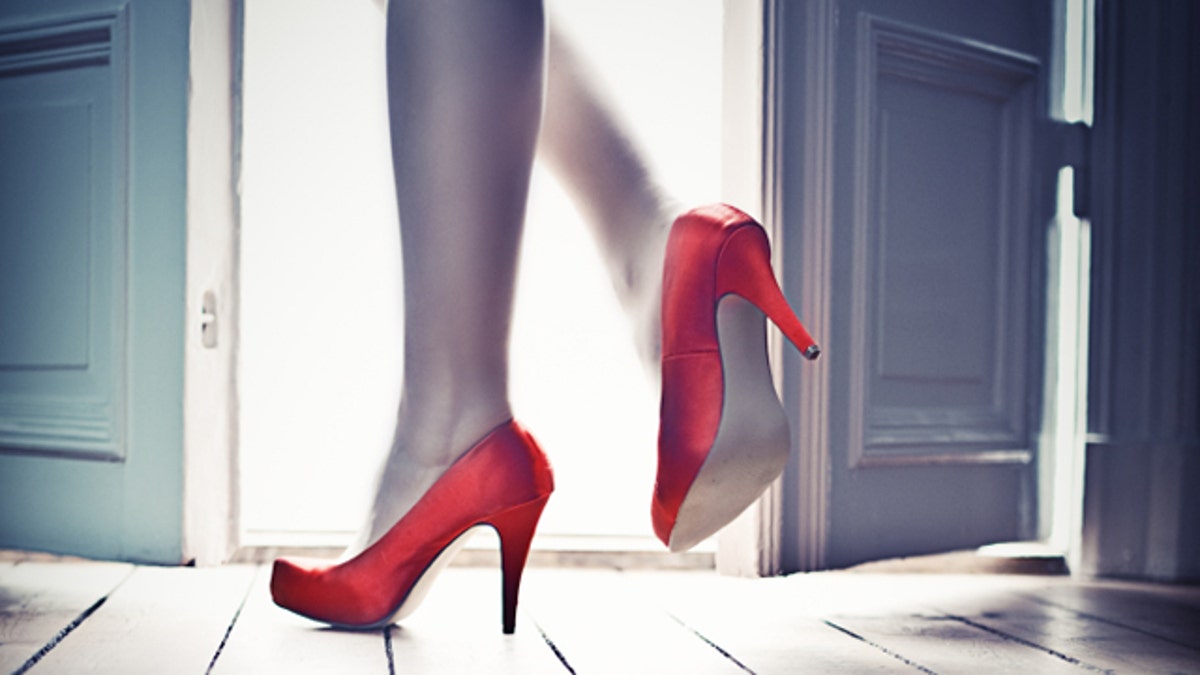
(iStock)
Holiday parties that require dressing up, shopping for gifts and New Year’s Eve dancing can all take a hefty toll on our feet, and even result in long-term damage, according to one expert.
Katy Bowman, a biomechanist and director of the Restorative Exercise Institute in Ventura, Calif., who wrote the recently released Every Woman’s Guide to Foot Pain Relief: The New Science of Health Feet, said footwear is one of the most common culprits behind debilitating foot pain.
“Certain qualities of footwear, such as height of the heel or how narrow the toe of the shoe is, can influence how likely it will be that person experiences foot pain,” Bowman said, adding that even small heels can create problems.
“High heels affect the geometry of the body as soon as you put them on,” she said. “They create a forward displacement. One to three inch heels don’t seem like very much, but the angle is actually pretty high.
Additionally, body posture and gait pattern can affect pain by putting pressure on sensitive tissues near the toes of the feet.
“Ideally, body weight should be carried over the heel, but while people are walking, they tend to have their pelvis out, or they lean forward,” Bowman said. “This puts weight over the middle or the front of the foot.”
Over the long-term, heels can cause more damage than people may expect, including osteoarthritis in the knees and hips, which can in turn increases the risk of knee or hip replacements or balance issues, she added.
Besides making smarter footwear decisions, Bowman said there are certain things women can do to prevent or reduce pain and strengthen feet.
“There are exercises that undo the effects of shoes by strengthening muscles in the foot and the calves,” Bowman said. The most effective exercises include:
-Calf and hamstring stretches
-Spreading toes out away from each other
-Lifting toes individually
These exercises stretch out the muscles most affected by high heels and offset the weakness that these shoes can cause.
“Do these foot exercises 15 minutes before putting shoes on, and as soon as you get out of the shoes; I’d say spend three minutes exercising for every hour you spent in the shoes,” Bowman said.
If you forget or don’t have time to do these exercises and wake up the morning after a party with achy, fatigued feet, which is referred to as a high heel hangover, Bowman said there are a few other ways to mitigate the pain, including:
-Wearing tennis shoes and toe-spacing socks
-Rolling a frozen water bottle over the soles of your feet
-Getting an oil massage
-Soaking your feet in a warm bath
Because foot pain can interfere with daily activities, especially walking or exercising, and lead to serious consequences as we age, Bowman said it’s important to keep foot health in mind during the holidays and year-round.
“I usually recommend that if you’re going to a party, think about footwear like you think about dessert – save up your calories,” Bowman said. “Don’t wear your heels to work that week, just limit your time to when it’s an absolute necessity to wear high heels. Other times, be sensible.”
